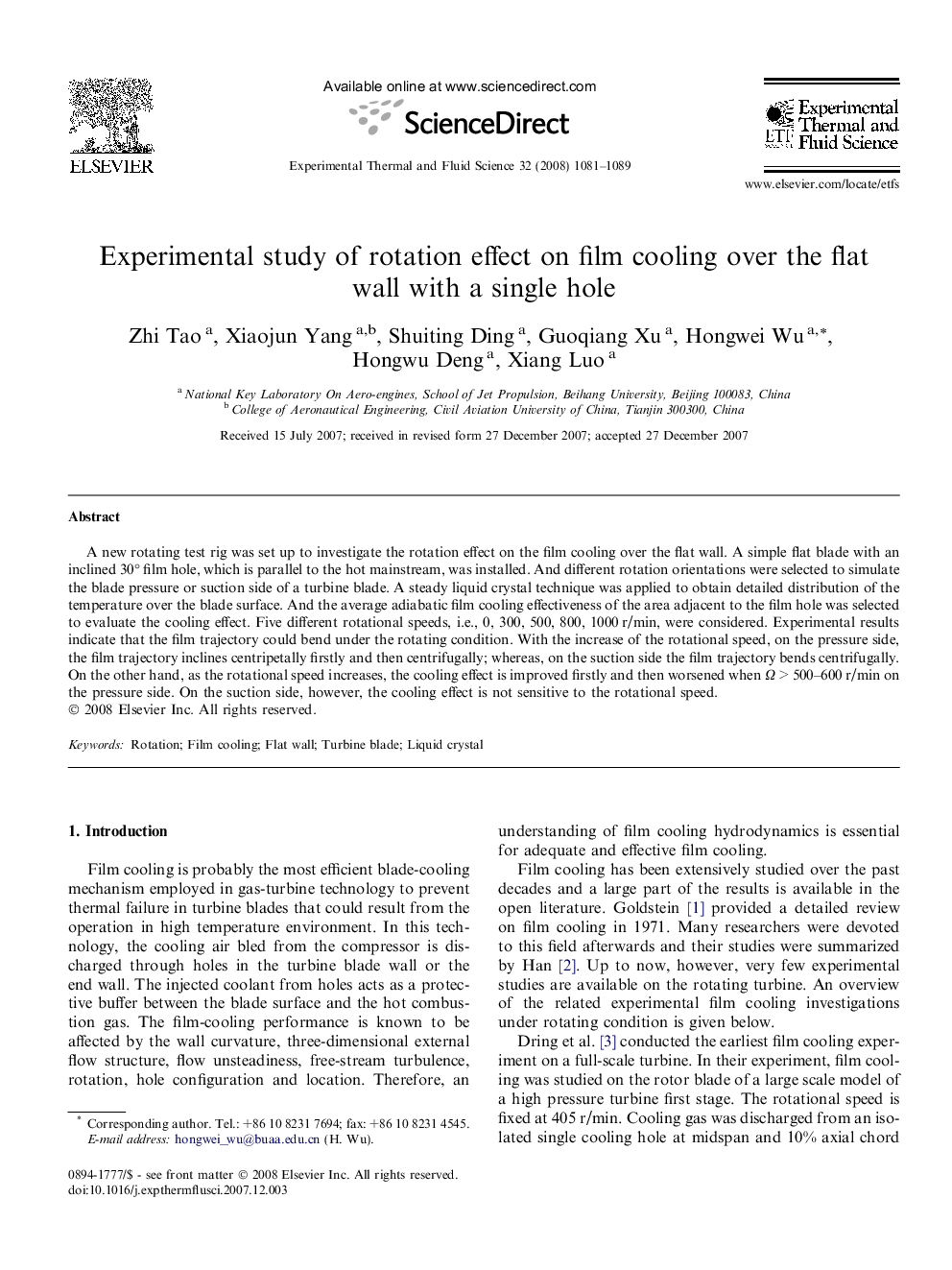| Article ID | Journal | Published Year | Pages | File Type |
|---|---|---|---|---|
| 652651 | Experimental Thermal and Fluid Science | 2008 | 9 Pages |
A new rotating test rig was set up to investigate the rotation effect on the film cooling over the flat wall. A simple flat blade with an inclined 30° film hole, which is parallel to the hot mainstream, was installed. And different rotation orientations were selected to simulate the blade pressure or suction side of a turbine blade. A steady liquid crystal technique was applied to obtain detailed distribution of the temperature over the blade surface. And the average adiabatic film cooling effectiveness of the area adjacent to the film hole was selected to evaluate the cooling effect. Five different rotational speeds, i.e., 0, 300, 500, 800, 1000 r/min, were considered. Experimental results indicate that the film trajectory could bend under the rotating condition. With the increase of the rotational speed, on the pressure side, the film trajectory inclines centripetally firstly and then centrifugally; whereas, on the suction side the film trajectory bends centrifugally. On the other hand, as the rotational speed increases, the cooling effect is improved firstly and then worsened when Ω > 500–600 r/min on the pressure side. On the suction side, however, the cooling effect is not sensitive to the rotational speed.
